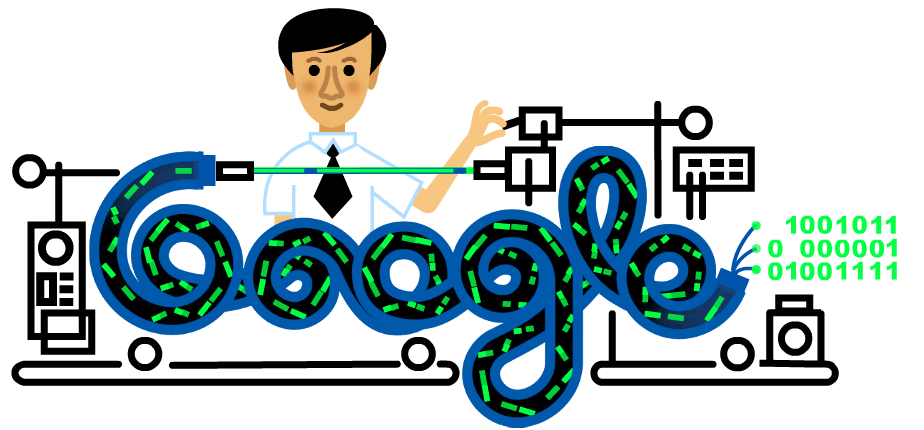
The latest Google Doodle celebrates what would have been the 88th birthday of the late Charles K. Kao, the pioneering engineer behind fiber optic communication widely used by the internet today.
Charles K. Kao and fiber optics
Charles Kuen Kao was born on November 4, 1933 in Shanghai, and from a young age he learned English and French, along with studying the Chinese classic texts. In 1948, Charles K. Kao and his family moved to British Hong Kong, which afforded him opportunities to get an education in electrical engineering from universities in England.
In the 1960s, while pursuing his PhD from the University of London, Kao worked at a Standard Telephone and Cables (STC) research lab in Harlow, Essex. There, Charles K. Kao and his colleagues experimented with optical fibers, specially designed strands of thin glass which are able to reflect light — oftentimes from a laser — from one end of the fiber to the other.
For data transmission, fiber optics can work a lot like metal wires, sending the usual 1s and 0s of binary code by rapidly turning a laser on and off to match the data being sent. However, unlike metal wires, optical fibers are not affected by electromagnetic interference, which made the technology seem very promising to scientists and engineers.
At the time, fiber optic technology had been used for various other practices including for lighting and the transmission of images, but some had found fiber optics to be too unreliable — or high-loss — for high-speed data transmission. What Charles K. Kao and his colleagues at STC were able to prove is that the reason fiber optic signals degraded was due to imperfections in the fibers themselves, and more specifically the material they were made from.
Through much experimentation, they ultimately found that silica glass could have a high enough purity to carry signals for miles, and to that end silica glass is still standard for fiber optics today. Of course, companies have further purified their glass since then, enabling the fiber to carry the laser light longer distances before degrading in quality.
In 1977, General Telephone and Electronics, a United States telecom provider, made history by routing telephone calls through a fiber optic network in California, and things only ramped up from there. For his part, Charles K. Kao continued looking ahead, both directing the ongoing research of fiber optics and, in 1983, sharing his vision for fiber optics to better connect the world through undersea cables. Just five years later, TAT-8 was run across the Atlantic Ocean, connecting North America to Europe.
In the decades since then, the use of fiber optics has grown exponentially, especially with the advent and growth of the internet. Now, in addition to the undersea fiber optics that connect the world’s continents and the fiber “backbone” networks that internet service providers use to connect parts of a country, it’s also possible to get a direct fiber optic connection to the internet in your own home. In reading this article, your internet traffic was most likely routed through a fiber optic cable.
So as you browse the internet today, be sure to remember Charles K. Kao and the many other engineers who made it possible to connect the world at incredibly high speeds.
Google Doodle for Charles K. Kao

Today’s animated Google Doodle for Charles K. Kao shows the man himself operating a laser, which is aimed at a fiber optic cable. Of course, being a Google Doodle, the cable is cleverly curved to spell out the word “Google.”
Inside the cable itself, you can see the basic principle of how fiber optics work. The light goes in one end, and as the cable curves, the light bounces off the wall of the cable. Bouncing ever forward, the laser light reaches the other end of cable where it’s translated into binary code.
As a fun easter egg, the binary shown in the artwork — “01001011 01000001 01001111” — can be converted to letters, which spell out “KAO” for Charles K. Kao.
More Google Doodles:
- Google honors We:wa, Zuni tribe leader, with interactive weaving Doodle
- Google Doodle honors Claude Cahun, photographer, author, and provocateur
- Google Doodle celebrates company’s 23rd birthday w/ a cake
Author: Kyle Bradshaw
Source: 9TO5Google



